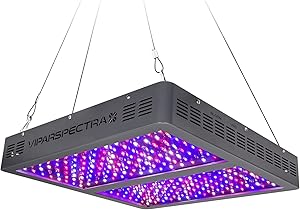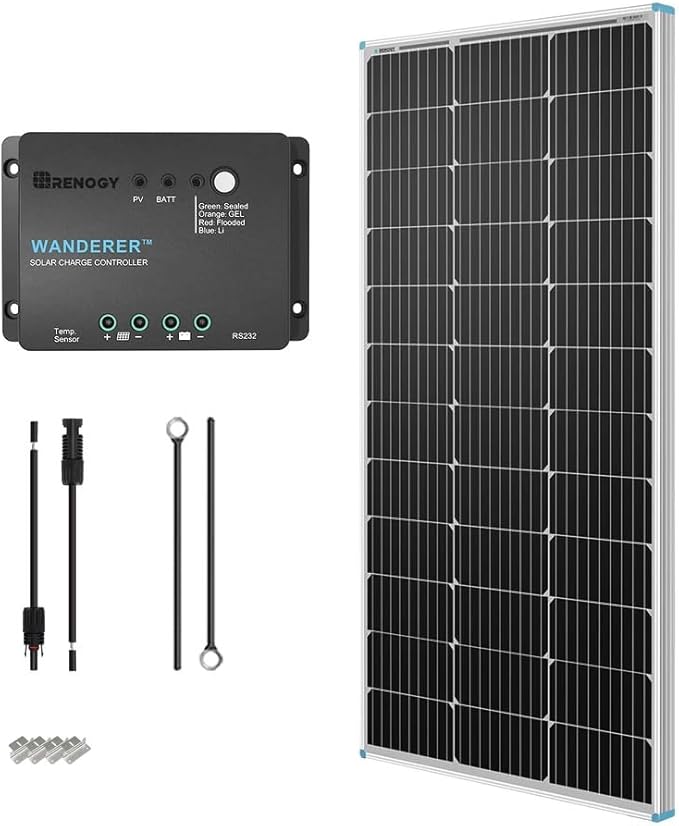12 SURPRISING BENEFITS OF INDOOR FARMING

Indoor Farming Hub is an Amazon Associate and earns from qualifying purchases.
In recent years, indoor farming, or vertical farming or indoor gardening, has emerged as an innovative and sustainable solution to modern agricultural challenges. By cultivating crops in controlled indoor environments using advanced technologies, indoor farming offers many benefits beyond traditional farming methods. In this comprehensive blog post, we will explore the ten surprising benefits of indoor farming and how it shapes the future of agriculture.
Table of Contents
1. Increased Crop Yield
One of the standout advantages of indoor farming is the significant increase in crop yields compared to traditional farming methods. By utilizing advanced techniques such as hydroponics and aeroponics, farmers can precisely control the nutrient levels delivered to each plant, ensuring optimal growth conditions. This level of precision leads to healthier plants that mature faster and produce higher yields than those grown in open fields. Additionally, the absence of external threats such as pests, soil-borne diseases, and unpredictable weather further enhances productivity, making indoor farming a highly efficient solution for food production.
If you’re curious to try hydroponic farming yourself, the AeroGarden Harvest Indoor Garden is a fantastic starter kit. It allows you to grow herbs and vegetables indoors effortlessly, optimizing nutrient delivery for faster, healthier growth — just like large-scale indoor farms!
2. Year-round Crop Production
Indoor farming allows for year-round crop production, ensuring that fresh produce is always available regardless of seasonal changes or extreme weather conditions. Farmers can simulate ideal growing conditions through climate-controlled environments, allowing crops to thrive in a consistent and predictable manner. Unlike traditional farming, which is highly dependent on weather patterns and daylight availability, indoor farming ensures a steady supply of food throughout the year. This reliability not only benefits consumers but also provides farmers with a stable income, reducing financial risks associated with seasonal variations.
Consistent lighting is essential for year-round indoor farming. The VIPARSPECTRA LED Grow Light provides full-spectrum light tailored for all plant growth stages, helping indoor gardeners maintain productive crops no matter the season.
3. Water Conservation
Water scarcity is a growing concern in agriculture, but indoor farming addresses this challenge through highly efficient water management systems. Unlike traditional soil-based farming, which often leads to water wastage through runoff and evaporation, indoor farms utilize recirculating systems that maximize water use efficiency. Hydroponic and aeroponic systems deliver water directly to plant roots in precise amounts, significantly reducing overall consumption. These methods can cut water usage by up to 90%, making indoor farming a crucial solution for sustainable agriculture in water-stressed regions.
To save water while maximizing crop growth, the VIVOSUN Hydroponic Grow Kit offers a simple way to set up a water-efficient indoor garden. It uses a circulating system that conserves water by delivering just the right amount directly to the plant roots.
4. Reduced Dependency on Pesticides
By creating a controlled and sterile environment, indoor farming minimizes the presence of pests and plant diseases, reducing the need for chemical pesticides. Unlike traditional farms, which are constantly exposed to insects, fungi, and bacteria, indoor farms use physical barriers and advanced filtration systems to keep contaminants out. This controlled setting leads to healthier plants and eliminates the risks associated with pesticide residue in food. As a result, indoor farming promotes a more sustainable, eco-friendly approach to agriculture while ensuring safer produce for consumers.
5. Improved Food Safety
With no need for chemical pesticides, herbicides, or fungicides commonly used in traditional agriculture, indoor farming produces cleaner, healthier food. The absence of harmful residues ensures that consumers receive produce free from toxic substances that can have long-term health implications. This is particularly appealing to health-conscious individuals who prioritize organic and chemical-free food options. Additionally, the controlled environment of indoor farms significantly reduces the risk of foodborne illnesses caused by bacterial contamination from soil, water, or wildlife.
6. Minimal Space Requirement
Indoor farming utilizes vertical space efficiently, allowing farmers to maximize food production even in limited areas. Unlike traditional farming, which requires vast expanses of land, indoor farms can be set up in warehouses, shipping containers, or even small urban spaces. By using multi-tiered shelving and stacked growing systems, farmers can cultivate a large volume of crops within a compact footprint. This makes indoor farming particularly valuable in densely populated cities, where arable land is scarce but the demand for fresh produce remains high.
Maximize small spaces with the Mr. Stacky 5-Tier Vertical Planter. Ideal for indoor gardening, it lets you grow a variety of plants vertically, making it perfect for apartments, balconies, or urban spaces where every inch counts.
7. Enhanced Nutritional Value
With precise control over growing conditions, indoor farming allows farmers to optimize nutrient delivery to crops, enhancing their nutritional content. By adjusting factors such as light intensity, CO₂ levels, and mineral composition, farmers can produce vegetables and fruits with higher concentrations of vitamins, antioxidants, and essential nutrients. Studies have shown that controlled-environment agriculture can result in crops with superior nutritional profiles compared to conventionally grown produce. This means consumers benefit from healthier food options that support better overall well-being.
8. Climate Change Resilience
Indoor farming is significantly less vulnerable to the unpredictable effects of climate change, ensuring a stable and reliable food production system. Unlike traditional farms that suffer from droughts, floods, heat waves, and other extreme weather events, indoor farms operate in controlled environments where conditions remain consistent. This not only protects crops from climate-related disruptions but also helps secure food supply chains in regions facing severe environmental challenges. As global temperatures continue to rise, indoor farming presents a sustainable solution to mitigate food shortages caused by climate instability.
9. Urban Agriculture
Indoor farming has the potential to transform urban areas into thriving agricultural hubs, reducing reliance on long-distance food transportation. By repurposing vacant buildings, warehouses, and rooftops, cities can integrate food production into their infrastructure, bringing fresh produce closer to consumers. This local approach to farming reduces carbon emissions associated with transportation while fostering community-based food security. Additionally, urban indoor farms can create job opportunities and promote economic growth in metropolitan areas by supporting a sustainable and localized food system.
10. Economic Viability
While the initial setup costs of indoor farming may be higher than traditional farming, the long-term financial benefits make it an economically viable investment. Higher crop yields, reduced water consumption, and minimal pesticide use contribute to significant cost savings over time. Additionally, the ability to produce food year-round ensures a consistent revenue stream for farmers, eliminating the financial risks associated with seasonal fluctuations. As technology advances and operational efficiencies improve, indoor farming is expected to become even more cost-effective and profitable in the future.
11. Energy Efficiency
Although indoor farming relies on artificial lighting and climate control systems, technological advancements have greatly improved its energy efficiency. LED grow lights, automated climate management systems, and energy-efficient heating and cooling solutions help minimize electricity consumption. Furthermore, many indoor farms are integrating renewable energy sources, such as solar and wind power, to reduce their environmental impact. As innovations continue to emerge, indoor farming is becoming an increasingly sustainable and eco-friendly solution for modern agriculture.
Want to power your indoor farm sustainably? The Renogy 100W Solar Panel Starter Kit makes it easy to harness solar energy, reducing your carbon footprint while keeping your farming operation eco-friendly.
12. Sustainable Urban Development
Indoor farming supports sustainable urban development by transforming abandoned buildings, warehouses, and rooftops into productive agricultural spaces. This localized approach reduces the carbon footprint associated with long-distance food transportation, making cities greener and more self-sufficient. Integrating farming into urban environments, it promotes food security while optimizing land use in densely populated areas. As cities grow, indoor farming offers a sustainable way to meet rising food demands without expanding traditional farmland.
Conclusion
Indoor farming revolutionizes agriculture by increasing crop yields, enabling year-round production, conserving water, and reducing pesticide dependency. Its benefits extend to improved food safety, efficient land use, climate resilience, and urban integration, making it a key solution for modern agricultural challenges. As climate change and population growth strain traditional farming, indoor farming provides a sustainable and scalable alternative. With its numerous advantages, it represents a major step forward in ensuring a stable, nutritious, and eco-friendly food supply for the future.
FAQs – Benefits of indoor farming
1. How does indoor farming impact the taste of produce?
Indoor farming allows precise control over growing conditions, including nutrients, light exposure, and CO₂ levels, which can enhance the flavor profile of fruits and vegetables. By optimizing these factors, indoor farms can produce sweeter, more vibrant, and consistently high-quality produce compared to traditional farming methods.
2. What are the main challenges faced by indoor farming?
While indoor farming offers many benefits, challenges include high initial setup costs, energy consumption for artificial lighting and climate control, and the need for skilled labor to manage advanced growing systems. Overcoming these obstacles requires technological advancements and sustainable energy integration.
3. Can indoor farming support staple crops like wheat and rice?
Currently, indoor farming is more suited for leafy greens, herbs, and certain fruits due to their shorter growth cycles and compact size. However, research is ongoing to adapt staple crops like wheat and rice to controlled environments, potentially making large-scale indoor grain production feasible in the future.
4. Is indoor farming organic?
While indoor farms often use fewer pesticides, they may not always meet organic certification requirements, which typically mandate soil-based growing methods. However, many indoor farms focus on pesticide-free, non-GMO, and clean growing practices that align with organic principles.
5, How does indoor farming affect biodiversity?
Indoor farming minimizes land use, reducing deforestation and habitat destruction associated with traditional agriculture. However, it primarily focuses on high-yield, commercially viable crops, which may limit genetic diversity compared to traditional farming ecosystems.
Other Useful Resources Related To Benefits Of Indoor Farming
- Hydroponics Overview: Learn about hydroponic systems, which enable efficient water use and space optimization in indoor farming.
- Aeroponics Explained: Discover aeroponic techniques that support high-density planting and pesticide-free cultivation.
- Vertical Farming Benefits: Explore how vertical farming contributes to increased yields, reduced water usage, and space conservation.
- Electro-Agriculture Innovations: Understand how electro-agriculture allows crops to grow in complete darkness, potentially revolutionizing food production.
- Bowery Farming’s Approach: Read about Bowery Farming’s use of technology and vertical farming to produce pesticide-free leafy greens.






